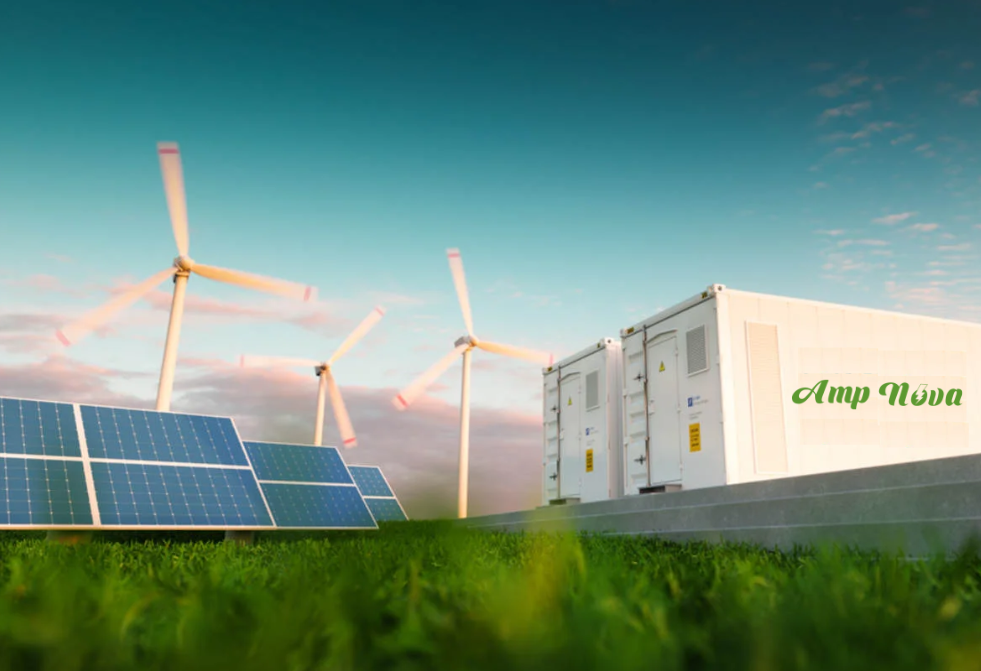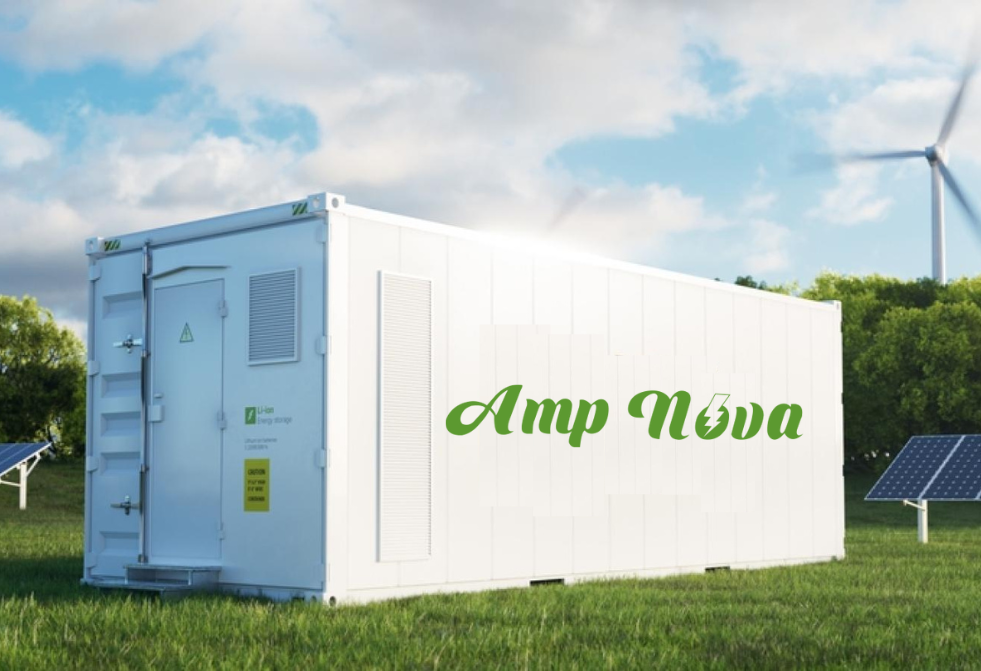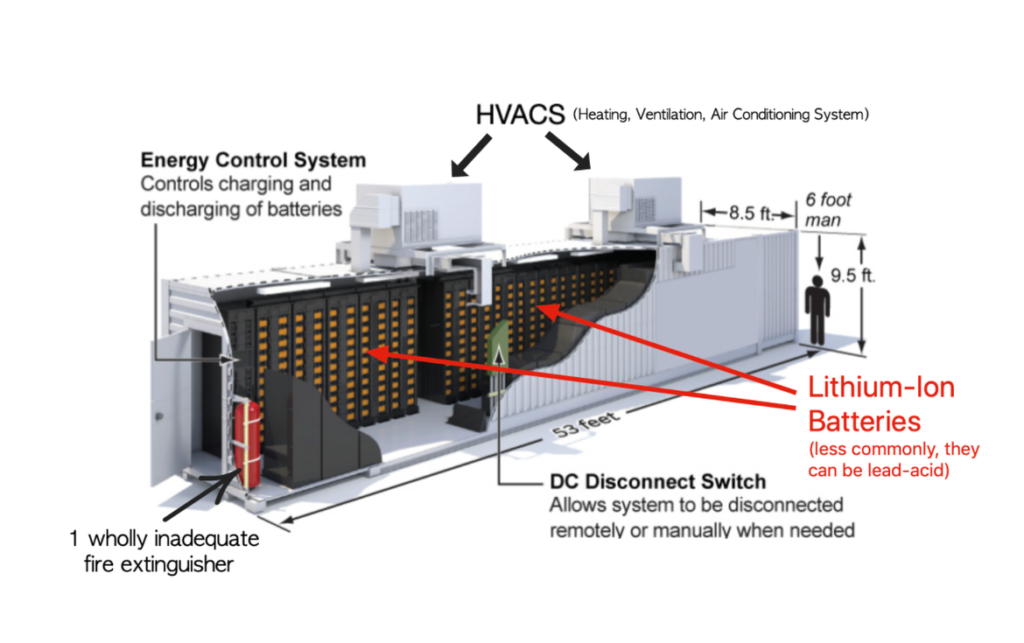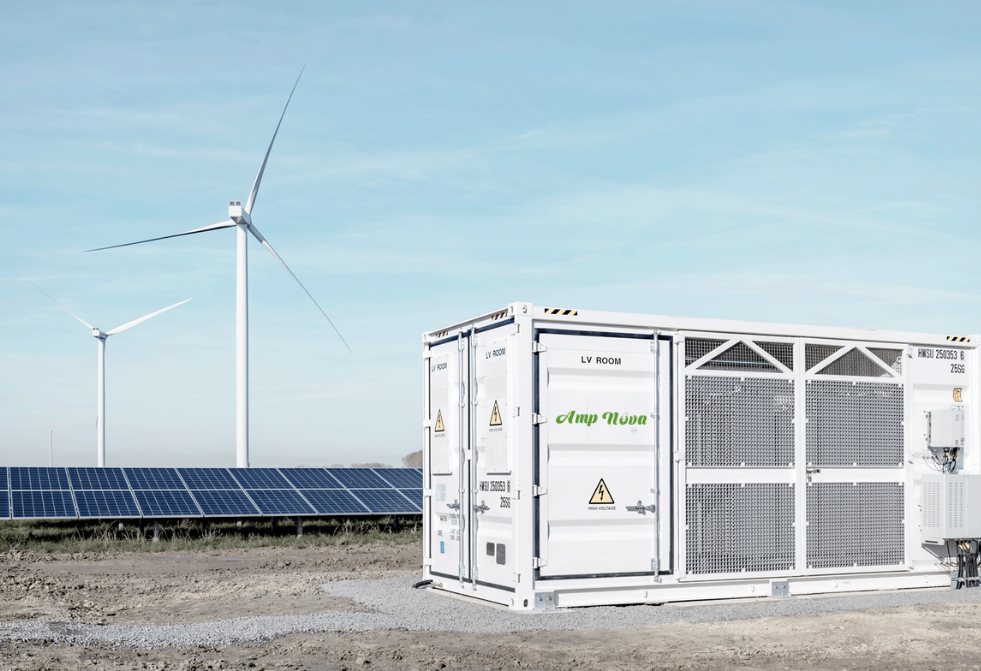- Introduction to Solar Energy Efficiency and Storage
- Understanding the Basics of Solar Energy Systems
- Key Components of a Solar Energy System
- How Solar Energy Systems Work
- The Importance of Energy Storage in Solar Power
- Different Types of Energy Storage Systems
- Balancing Energy Production and Consumption
- Improving Solar Panel Performance Through Storage Solutions
- The Impact of Energy Storage on Solar Energy ROI
- Integration of Energy Storage with Solar Installations
- Advancements in Energy Storage Technology
- Conclusion: The Symbiotic Relationship of Solar Energy and Storage Systems
Contents
- 1 Introduction to Solar Energy Efficiency and Storage
- 2 Understanding the Basics of Solar Energy Systems
- 3 The Importance of Energy Storage in Solar Power
- 4 Different Types of Energy Storage Systems
- 5 Balancing Energy Production and Consumption
- 6 Improving Solar Panel Performance Through Storage Solutions
- 7 The Impact of Energy Storage on Solar Energy ROI
- 8 Integration of Energy Storage with Solar Installations
- 9 Advancements in Energy Storage Technology
- 10 Conclusion: The Symbiotic Relationship of Solar Energy and Storage Systems
Introduction to Solar Energy Efficiency and Storage
Solar energy storage systems has emerged as a paramount renewable energy source, pivotal in the global shift towards sustainable power. Its harnessing is quintessential for environmental conservation and energy independence. However, the efficiency with which solar Energy storage systems is converted to electricity and its availability when needed poses significant challenges. Solar panels, or photovoltaics (PV), convert sunlight into electricity with varying degrees of efficiency, often influenced by the materials used, the architecture of the PV cells, and the environmental conditions.

Efficiency in solar energy systems refers to the proportion of sunlight that can be converted into usable electricity. It’s a critical metric as it determines the amount of energy output that can be generated from a given surface area of solar panels. Higher efficiency means more electricity can be produced from smaller setups, which is particularly advantageous in areas with limited space.
On the other hand, solar energy is intermittent – the sun doesn’t shine all the time, and its intensity can vary. This is where energy storage systems (ESS) come into play. They are essential for capturing and storing energy produced during peak sunshine hours for use during cloudy periods or nighttime, ensuring a consistent energy supply.
- Lead-acid batteries: Traditionally used, offering a cost-effective solution but with lower energy densities and shorter lifespans.
- Lithium-ion batteries: Currently the preferred option due to higher energy densities, longer lifespans, and decreasing costs.
- Flow batteries: An emerging technology with the potential for longer-duration storage.
- Thermal storage systems: These systems store energy in the form of heat, which can be converted to electricity.
Solar energy efficiency and its seamless storage are crucial in accelerating the adoption of solar technology, ultimately leading to enhanced sustainability and energy security. The integration of advanced energy storage expands the versatility and reliability of solar power, making it a formidable alternative to traditional energy sources.
Understanding the Basics of Solar Energy Systems
Solar Energy storage systems harness the sun’s power to generate electricity for homes, businesses, and other applications. At the core of these systems are solar panels, which are composed of photovoltaic (PV) cells that convert sunlight directly into electrical energy.
Key Components of a Solar Energy System
- Solar Panels (PV Cells): These are the most visible parts of a solar energy system. Made from silicon, PV cells absorb photons from sunlight, creating an electric field across layers and causing electricity to flow.
- Inverter: The inverter is a critical component that converts direct current (DC) generated by the solar panels into alternating current (AC) that can be used by household appliances.
- Mounting Structure: This framework supports the solar panels on rooftops or the ground, ensuring they are positioned at the correct angle to maximize sun exposure.
- Battery Storage (optional): Batteries can store solar power generated during the day for use at night or during overcast days, enhancing energy independence and reliability.
- Charge Controller (for systems with batteries): This device regulates the flow of electricity to and from the battery, protecting it from overcharging and deep discharging.
- Metering: Meters measure the amount of electricity produced, and in grid-tied systems, they can record energy fed back into the grid for net metering purposes.
How Solar Energy Systems Work
When sunlight hits the solar panels, PV cells generate DC electricity. This electricity is either used immediately by connected loads, stored in batteries if present, or converted into AC by an inverter for household or commercial use. Surplus energy can be exported to the grid in systems with net metering arrangements, potentially earning credits for the solar Energy storage systems owner.
Understanding these basics is pivotal for anyone looking to maximize the efficiency of their solar energy system by integrating energy storage systems.
The Importance of Energy Storage in Solar Power
The integration of energy storage systems is crucial in maximizing the potential of solar power. Solar energy, while abundant and renewable, suffers from variability due to daily and seasonal changes in sunlight. Energy storage addresses this intermittency by:
- Ensuring Stability: It balances supply and demand, maintaining grid stability. Without energy storage, the surplus energy generated during peak sun hours would be wasted, while energy deficits might occur when solar generation is insufficient.
- Increasing Efficiency: Storing excess Energy storage systems during peak production times for use during lower production periods optimizes the use of generated energy and can reduce reliance on less efficient or more polluting backup power sources.
- Flexibility in Usage: Energy storage allows energy generated from the sun to be used as needed rather than at the time of generation. This flexibility makes solar energy a more practical and dependable source for a wider range of applications.
- Enhancing Energy Security: By storing solar energy, we reduce dependence on fossil fuels and other non-renewable energy sources, enhancing energy independence and security.
- Supporting Distributed Generation: Localized storage at the site of solar panels can reduce transmission losses and congestion in the electricity grid, leading to a more efficient and resilient energy system.
Furthermore, energy storage technologies facilitate participation in demand response services and enable solar power producers to take advantage of time-of-use electricity rates by releasing stored energy when rates are higher. Consequently, they provide an economic incentive for the adoption of renewable energy while also contributing to a more sustainable and resilient power infrastructure.
Different Types of Energy Storage Systems
Storage plays a pivotal role in enhancing solar energy efficiency. Several different types of energy storage systems exist, each unique in its operations.
- Batteries: The most common energy storage systems are battery-based, employing technology such as lead-acid, lithium-ion, sodium-sulfur, or flow batteries to store energy chemically.
- Pumped Hydroelectric Storage: This method utilizes two water reservoirs at different elevations. Energy is stored by pumping water to the higher elevation and released as hydroelectric power when it flows back down.
- Thermal Storage Systems: Here, energy is stored in the form of heat. For example, solar heat can be stored in materials like molten salts, which maintain high temperatures for long periods.
- Compressed Air Energy Storage (CAES): Energy is stored by compressing air in underground caverns or storage tanks. The high-pressure air is released to drive turbines, generating electricity when needed.
- Flywheels: Flywheel systems store energy kinetically with a spinning rotor in a low-friction environment. The energy is released by slowing down the flywheel, which turns a generator.
- Superconducting Magnetic Energy Storage (SMES): This system stores energy in the magnetic field created by the flow of direct current in a superconducting coil, which is cryogenically cooled to below its superconductivity temperature.
- Supercapacitors: Also known as ultracapacitors, these store Energy storage systems electrostatically and are capable of rapid charge and discharge cycles, which are useful for applications requiring quick bursts of power.
Each system has its own merits and suitability depending on factors like required capacity, discharge duration, physical space, climate conditions, and economic considerations. Integrating the appropriate energy storage system can significantly increase the efficiency and reliability of solar energy storage systems.

Balancing Energy Production and Consumption
Integrating energy storage systems (ESS) with solar power generation is crucial for regulating the equilibrium between energy production and consumption. Solar energy storage systems , while abundant and renewable, is intermittent by nature, depending on the diurnal cycle and weather conditions. This inconsistency presents challenges for grid stability and the continuous supply of electricity.
Energy storage systems offer a solution to this unpredictability by capturing excess energy produced during peak sunlight hours. This stored energy can then be dispatched during periods of low solar generation or high electricity demand, ensuring a continuous and reliable power supply. By smoothing out the discrepancies between production and demand, ESS turns solar energy into a more consistent and manageable source.
- ESS enables renewable energy integration by mitigating the variability of solar power.
- Stored energy can be used during peak load times, reducing the need for energy from non-renewable sources.
- Advanced ESS, such as lithium-ion batteries or flow batteries, provide rapid response to changes in energy demand.
- Enhancing grid resilience and stability, ESS prevents blackouts and brownouts by promptly addressing demand spikes.
- Demand charge management through ESS allows businesses to avoid high energy costs during peak times.
Responding effectively to the pressing need for sustainable energy solutions demands holistic approaches to energy storage systems. As part of grid infrastructure, ESS paired with solar installations not only optimizes energy consumption but also contributes significantly to reducing carbon footprint and promoting a greener energy economy. The balanced approach advocates for a synergy between production capabilities and consumption patterns, marking a pivotal step toward achieving energy sustainability objectives.
Improving Solar Panel Performance Through Storage Solutions
Solar panel systems generate the most electricity during the midday when the sun is at its peak. However, energy demand often peaks in the early evening when solar energy production is decreasing. To reconcile this mismatch, energy storage solutions are integral in capturing excess energy produced and storing it for use when it’s needed most, effectively increasing the usability and efficiency of solar power.
Energy storage solutions, such as batteries, align solar energy production with consumption patterns. Here are several ways in which storage solutions can enhance the performance of solar panel systems:
- Maximizing Energy Use: Energy storage systems store surplus solar energy, ensuring that no generated power goes to waste. Users can draw on this stored power during periods of low production, such as nighttime or cloudy days.
- Stabilizing the Electricity Grid: Batteries can release stored energy quickly to balance supply and demand, contributing to grid stability and reducing the risk of power outages.
- Increasing Energy Independence: With a robust storage solution, homes and businesses can reduce their reliance on the grid, which can save money and enhance energy security.
- Supporting Time-of-Use Tariffs: Storage solutions allow users to exploit time-of-use tariffs by consuming stored solar energy during peak demand times when electricity prices are highest.
- Enabling Off-Grid Systems: In remote locations, combining solar panels with storage solutions can provide a reliable off-grid power source, making solar power viable in areas without grid access.
By incorporating storage technologies, the performance of solar panels is not only optimized for immediate use but also adapted for a future where renewable energies could potentially dominate the energy landscape. The combination of solar panels and energy storage systems creates a symbiotic relationship that elevates the utility and effectiveness of solar investments.
The Impact of Energy Storage on Solar Energy ROI
The integration of energy storage systems into solar energy solutions is revolutionizing the way that solar energy is utilized, with significant effects on the Return on Investment (ROI). Energy storage systems allow for the capture of solar power during peak production times, which can later be utilized when solar generation is lower, reducing the reliance on grid electricity and enhancing energy independence.
Energy storage impacts solar energy ROI in several key ways:
- Increased Self-Consumption: With the ability to store energy, solar system owners can maximize the use of their solar electricity by using it during times when the sun is not shining, thus increasing savings on electricity bills.
- Peak Shaving: Energy Storage systems can release energy during peak demand times when electricity rates are higher. By doing so, they reduce the highest rate charges—known as demand charges—which can significantly lower energy costs.
- Improved Resilience: Energy storage provides backup power during outages, which can prevent costly downtime for businesses and add convenience for residential users.
- Incentive Eligibility: Many governments and utility companies offer incentives for energy storage systems, which can improve the overall ROI of a solar plus storage system.
Furthermore, as the cost of battery technology continues to decrease and efficiency improves, the initial investment is offset quicker due to these combined savings, thus accelerating the ROI. The lifespan of energy storage systems aligns well with solar panels, ensuring that the benefits extend over the long term. These aggregated financial benefits underscore the transformative impact energy storage has on the value proposition of solar energy systems, making it a compelling option for those seeking to maximize their investment in renewable energy technologies.
Integration of Energy Storage with Solar Installations
Integrating energy storage solutions with solar power systems has become a pivotal strategy in enhancing solar energy efficiency. By installing batteries or other storage technologies, the intermittent nature of solar power is addressed, allowing for the continuous use of solar-generated electricity even when solar panels are not actively producing energy, such as during nighttime or overcast conditions.
- Increased Self-Consumption: Energy storage enables households and businesses to maximize the use of their solar-generated electricity. Stored energy can be used during peak demand times when electricity from the grid is more expensive.
- Grid Independence: With sufficient storage capacity, solar installations can potentially function independently from the power grid. This reduces reliance on the grid and can provide electricity during outages or in remote locations without grid access.
- Load Shifting: Storage systems allow for load shifting, which involves charging the storage units during periods of low demand (or when solar production is high) and discharging them during peak times. This decreases demand on the grid and potentially lowers electricity costs.
- Improved Grid Stability: Integrating storage with solar installations can improve grid stability by providing ancillary services such as frequency regulation and voltage support. This can be critical in maintaining the reliability of the power network.
- Increased ROI: Although incorporating energy storage can increase initial costs, it can also increase the Return on Investment (ROI) for solar systems by optimizing the usage of solar energy, reducing electricity bills, and potentially earning revenue through grid services.
For solar projects, the selection of an appropriate storage technology—whether lithium-ion batteries, flow batteries, or other evolving technologies—should be based on factors such as capacity requirements, longevity, efficiency, and cost-effectiveness. As technology advances and costs decline, the integration of energy storage with solar installations is projected to fundamentally transform the landscape of renewable energy production and consumption.

Advancements in Energy Storage Technology
As solar energy technology continues to improve, substantial advancements in energy storage are heralding a new era of efficiency and reliability. Modern energy storage systems aim to address the intermittent nature of solar power by effectively capturing and retaining excess generation for later use. These developments include:
- Lithium-ion Battery Improvements: Once primarily used in small electronics, lithium-ion batteries have evolved dramatically. They now feature higher densities and longer life spans, making them suitable for home and grid-scale energy storage.
- Solid-State Batteries: A leap forward from traditional batteries, solid-state batteries offer higher energy density, faster charging times, and reduced fire risk due to the absence of liquid electrolytes.
- Flow Batteries: These systems store energy in liquid electrolytes that flow through a cell stack. They are especially adept at long-duration storage, which is critical for maintaining a stable supply of solar energy.
- Ultra-capacitors: Ultra-capacitors, also known as supercapacitors, store energy electrostatically, facilitating rapid charge and discharge cycles. While their energy density is lower than chemical batteries, their life expectancy and reliability are higher.
- Thermal Energy Storage: Advancing beyond traditional storage forms, thermal energy storage involves capturing solar heat that can be stored and converted back to electricity. This includes advancements in molten salt storage, which can retain heat efficiently and provide power for hours or days.
- Hydrogen Storage: Solar power can be utilized to electrolyze water, producing hydrogen as a versatile energy carrier. This hydrogen can be stored over long periods and reconverted to electricity through fuel cells or combustion.
These technological innovations contribute crucially to enhancing solar energy utility, ensuring that the power is available exactly when it is needed, thus optimizing the efficiency of solar energy systems and aiding in the transition to a more sustainable energy landscape.
Conclusion: The Symbiotic Relationship of Solar Energy and Storage Systems
The integration of energy storage systems has significantly elevated the efficacy and reliability of solar energy, forging a symbiotic relationship that promises a sustainable and efficient power supply. On the surface, solar energy presents a clean, renewable resource that is limitless during daylight hours. However, its intermittent nature is its Achilles’ heel. This is where energy storage systems step in to create harmony.
Energy storage technologies, such as batteries, capacitors, and pumped storage, have become the linchpin for optimizing solar energy utilization. By storing excess energy generated during peak sunlight hours, these storage solutions ensure that the power continues to flow even when the sun isn’t shining. This addresses one of the fundamental challenges of solar power – its variability.
The benefits of this alliance are manifold:
- Stabilization of the Power Grid: The combination of solar energy and storage systems smooths out the fluctuations in power output, resulting in a more stable and dependable grid.
- Enhancement of Energy Security: With increased storage capacity, energy security improves as dependency on unpredictable sources and the power grid decreases.
- Maximization of Solar Investments: Energy storage systems empower solar energy producers to maximize their output and financial return, making solar investments more lucrative.
Moreover, the environmental incentives are impossible to ignore. The reduced reliance on fossil fuels curtails greenhouse gas emissions, propelling us towards the essential goals set by international climate accords.
The future of solar energy is indubitably brighter with energy storage systems from Solar Battery Manufacturer. This relationship is not only symbiotic but also catalytic, driving the transition to a cleaner, more resilient energy landscape. As research propels storage technology forward, the potential for solar energy will continue to expand, further solidifying this mutualistic bond. Get in touch!
